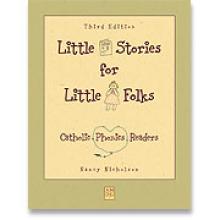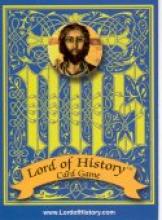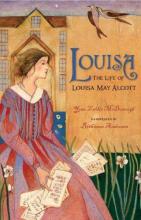No name
Little Stories for Little Folks
The Parent's Guide offers steps to prepare your child to read by using the enclosed flashcards (printed on card stock) to gain letter and sound recognition and then proceeding to work on pre-reading blends (with the pre-reading sound blend sheets that are included in the program and printed on card stock). After these steps are accomplished, the child will be ready to proceed to the phonics readers. The parent's guide also offers discussion questions to help your child get more out of each story.
There are four sets of readers, each set being identified by its own color. The booklets and flash cards come as an 8 1/2 x 11 pad. Each booklet starts out as a regular-sized piece of paper which you fold into four to form a child-sized booklet.
 Level 1 contains 15 booklets. The story titles are: "At Mass", "Stop! Hot Pot!", "Sad Nip", "Mud on the Rug", "The Hot Pup", "Mom Gets Help", "The Rat", "Little Ann", "Bat the Ball", "Funny Ann", "The Campers", "God With Us", and "Messy Room".
Level 1 contains 15 booklets. The story titles are: "At Mass", "Stop! Hot Pot!", "Sad Nip", "Mud on the Rug", "The Hot Pup", "Mom Gets Help", "The Rat", "Little Ann", "Bat the Ball", "Funny Ann", "The Campers", "God With Us", and "Messy Room".
This set starts with simple words such as "pat" and "sat" and progresses slowly to more complex words like "tent", "small" and "under".
 Level 2 contains 10 booklets. The story titles are: "Dad's Cake", "Mrs. May is Sick", "Mike's Bike", "Visit the Sick", "We Hope to See the Pope", "The Little Goat with No Sense", "The Cold Rain", "Feed the Hungry", "The Tease", and "Noon Potluck."
Level 2 contains 10 booklets. The story titles are: "Dad's Cake", "Mrs. May is Sick", "Mike's Bike", "Visit the Sick", "We Hope to See the Pope", "The Little Goat with No Sense", "The Cold Rain", "Feed the Hungry", "The Tease", and "Noon Potluck."
This level starts with words like: "cake" and "taste" and progresses to words like "salad", "baby" and "table".
 Level 3 contains 10 booklets. The story titles are: "Ann Cleans the Church", "Blessed Sacrament", "St. Paul", "A Toy for a Boy", "At the Beach", "The Found Rosary", "Run the Race", "School, Where?", "The Quake", and "I Didn't Know".
Level 3 contains 10 booklets. The story titles are: "Ann Cleans the Church", "Blessed Sacrament", "St. Paul", "A Toy for a Boy", "At the Beach", "The Found Rosary", "Run the Race", "School, Where?", "The Quake", and "I Didn't Know".
The starts with words like "kneel" and "holy" and progresses to words like "receive" and "neighbor".
 Level 4 contains 10 booklets. The story titles are: "The Bright Star", "The Caught Calf", "Mr. Brown's First Holy Communion", "Kim's Adoption" (in two parts), "In the Match Box", "Badge Fudge", "Squirt", and "Our Lady's Secret".
Level 4 contains 10 booklets. The story titles are: "The Bright Star", "The Caught Calf", "Mr. Brown's First Holy Communion", "Kim's Adoption" (in two parts), "In the Match Box", "Badge Fudge", "Squirt", and "Our Lady's Secret".
This level starts with words like: "night" and "follow" and progresses to words like "cheerfully" and "enough".
Set contains:
22 page softcover parent's guide, set of 45 booklets, 47 flashcards
Copyrights 1998/2004
Donated for review by Catholic Heritage Curricula
Little Therese
Living the Liturgical Year: Volume 1
The second chapter provides detailed ideas for Home Education during Advent by means of a unit study on the time before Christ. This unit study ties together a certain amount of History, English/Vocabulary, Geography, Religion, Math, Literature, Health, Religion, Art, Science, Home Economics and Latin/Music in order to delve deeper into the meaning of Advent.
Chapter three covers Advent Recipes which differ from older books because of a more modern emphasis on natural foods. I would also have to explain that the recipes are not necessarily "traditional" Advent recipes, but rather natural food recipes that would be considered appropriate for Advent. This chapter includes an extensive segment on growing sprouts as well as recipes for dishes (along with explanations of why they are appropriate) such as: Avocado Potato Salad; Root, Sprout and Flower Noodle Salad; Carrot Salad Fish Loaf, Beet Soup, Avocado-Cauliflower Cream Soup, Carrot Cake and Sprouted Sunflower Burgers. All recipes in the book are meatless and in fact contain no animal products (making them cholesterol free). A four page section in the middle of the book provides glossy, full-color photos of the recipes, many of which incorporate festive decorations. The book also includes an extensive bibliography, a listing of sources for materials and foods mentioned in the book and an alphabetical index of recipes.
This book was donated for review by the author.
Look! Seeing the Light in Art
I found this quite accidentally when browsing the art shelves in the non-fiction children books section at our library system's main branch last week.
Mind you, I am always carting around mountains of books in huge, oversize bags, and I am thankful for strong, teen sons, and for downtown ballet and piano classes allowing me the time to browse at the library.
At the library, I try to throw in the bag only what looks promising, and I still end up bringing home volumes that go directly back into the return bag, almost unopened. So what I post here is truly the cream of the crop-- at least the cream of my own random crop!
Back to Wolfe's marvelous book: she is from the UK and has received awards for her art books for children. I would give her an award as well! (I have just requested the two other titles in this series from Inter Library Loan). I like the paintings she chooses to show her artistic points-- in this volume, the effect of light onto works of art-- and I like the language she uses to talk about them. The book is for children and yet it doesn't talk down or use patronizing language. Art should be talked about simply, clearly-- and she does just that, as she discusses the use of light in different aspects using 18 great works of art as examples. In fact, I am taking this book to take to my art students at co-op on Friday, and my teens at home approve!
The only negative thing I would say is that I would have chosen another of the many art works depicted in the book for the cover. Alas, that may be a very insignificant point, but it is one that could mean a lot to a visual person like me, who had to bet on the stunning art wok inside the book when the cover shows a very boring Picasso.
To close, another positive: Wolfe is not afraid to acknowledge that it is impossible to talk about art without discussing sacred art. Indeed her book opens with the gorgeous Conversion of Saint Paul by Caravaggio (so timely for the Year of Saint Paul!), and it closes with a discussion on "Heavenly Light", using Blessed Fra Angelico's version of Paradise from The Last Judgement.
Lord of History Card Game
It's nice to find a colorful Catholic history supplement of this nature that includes both saints and other figures of importance. I'm sure that many children will enjoy this fun way of learning about key Catholic figures from history. It should also serve to inspire them to learn more about their favorite ones. Even though I've read a great deal about History, simply reading these brief sketches helped me make some interesting connections that I hadn't yet made. My only complaint is that the writing style in some portions of the biographical sketches is rather poor.
25 glossy cards (2 1/2 x 3 1/2 inches)
This item was donated for review by Lord of History (www.lordofhistory.com)
Lord of the World
The setting is a future society where the Catholic Church is no more than an embattled remnant. In the popular and intellectual view, culture has moved past the "need" for faith in the supernatural. Near the beginning of the book, two young priests discuss with their superior how to regain some Catholic foothold in a culture which has been de-sacramentalized; of the two, one goes over to the enemy's side, while the other will be hunted and scorned for his faith. The latter priest, Father Percy, a sort of focal point of the book, has the odd distinction of being physically almost identical to his counterpart, a mysterious international leader who has a more-than-human influence on the people he gathers around him. This anti-Christ figure is personable, not obviously evil, and seems in all ways more powerful than the fugitive priest - but as Christ's representative, Father Percy is ultimately victorious in the task he is called to carry out. Their physical resemblance seems to be a device to underline the contrast.
The contrast is also demonstrated in their respective influences on a married couple and the husband's mother, who are key characters in the book. The mother is drawn back towards the sacraments as she drifts closer to death while the attractive couple move from kind "tolerance" to active antagonism for the church and all it represents.
Modern humanitarian secularism eases into savage barbarism and the light of truth seems to flicker and die, but though the events are dark, the ending demonstrates that the battle has been won on a supernatural level even while lost by worldly standards.
I would probably save this book for an older high-schooler who is mature enough to distinguish between tenets of the faith and imaginative extrapolation. It might be quite interesting to read this book alongside some secular works in the same genre - Aldous Huxley's Brave New World, Orwell's 1984 and Animal Farm, or even some of the works of H.G. Wells. Another book written from a Catholic perspective, a science fiction post-apocalyptic classic from the 1950's, is Walter Miller's A Canticle for Leibowitz. One more book which deals with the effect of modernism on society is C.S. Lewis's That Hideous Strength, the last of his Space Trilogy. I could see these books being read as an introduction to modern worldviews in perhaps 11th or 12th grade.
Louisa
I love picture books and I love biographies... and I love it when both are combined successfully! This warmly illustrated picture book tells of the most beloved American author Louisa May Alcott. Her family was definitely sui generis, holding unusual beliefs and moving often, and Louisa began thinking and writing poetry at a very young age.
This picture book sheds light on what a noble soul Louisa had, filled of generosity, integrity and character. Highly recommended especially for young readers who love the wonderful Little Women author.










